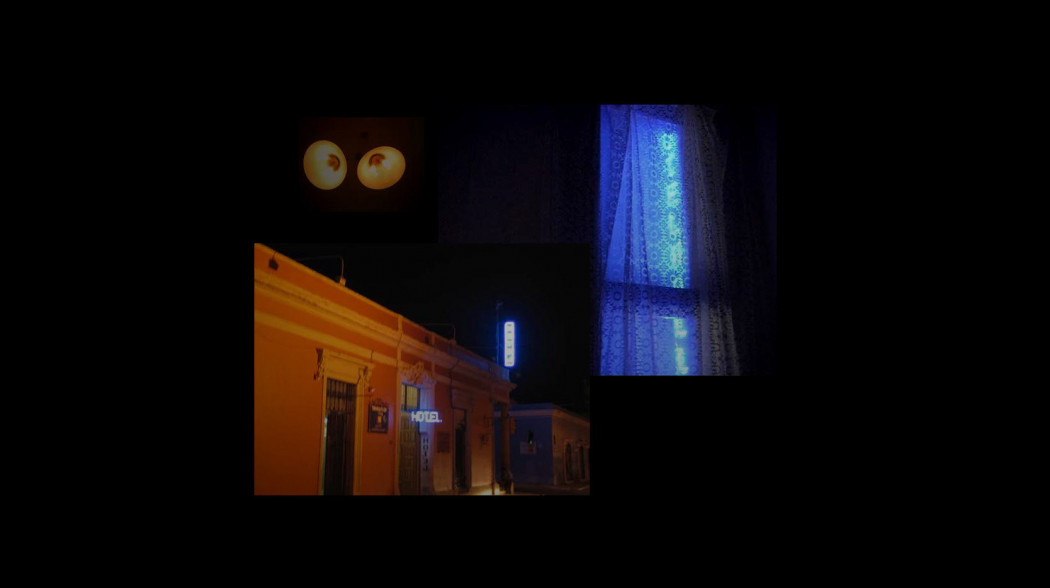Maja Bajevic, I Wish I Was Born in a Hollywood Movie
Launch date: March 30, 2006, Artist Web Projects
Overview
Maja Bajevic’s I Wish I was Born in a Hollywood Movie presents images of locations reminiscent of cinema noir -- melancholic and bleak, yet compelling. Bajevic set out to contemplate the impact of the "dream machine" by weaving together this collection of scenes that serve as real-world counterpoints to Hollywood’s glamorized representations of life.
Flash is required, and sound is an essential element of the work.
Funding for this project has been provided by the New York State Council on the Arts and Etant donnes: The French-American Fund for Contemporary Art.
Special thanks to Enes Huseincehajic for Flash programming.
In 2020, this project was reprogrammed in HTML5 because Flash is no longer supported by most browsers. The initial Flash version can be viewed here.
Maja Bajevic's multi-faceted body of work has often addressed the permeability of the boundary between what is public and what is private. In her early projects the driving force behind her performances and installations was often conflict (specifically war) and its impact on people's lives. With I Wish I Was Born in a Hollywood Movie, her first web-based artwork, she shifts her focus from politics to a broader cultural force, the Hollywood "dream machine." Wishing to explore its influence, specifically the personal, internal conflict created by the disparity between the idealized and glamorized representations of life found in popular movies and the stark realities of everyday life, she wrote, "When reality gets confronted with that ideal picture it can only lose."
In I Wish I Was Born in a Hollywood Movie Bajevic presents photographic images she took in Mexico City, Paris, Stockholm, Amsterdam, Venice, Sarajevo, and elsewhere. In contrast to images of the kind found in tourist brochures, she sought out places reminiscent of scenes from cinema noir: morose exteriors, gritty interiors with fixtures in various states of decay, bleak stairwells, windows without views, stained walls, and more -- "sad" as Bajevic described them, yet somewhat paradoxically, also "nostalgic." A soundtrack of a recorded street musician plays throughout, punctuated by occasional sound effects, including the sound of knocking, planes flying overhead, breaking glass, and a creaking door hinge.
As visitors to the website click to explore the project, the images overlay each other, presenting multiple paths through which to navigate the work. Some layers move while others transition through dissolves and lighting effects, creating a low-tech kind of animation. Layers are presented much like windows in an operating system, with the ubiquitous "X" in the upper right corner signifying the method to close. Images of actual windows appear at multiple junctures. According to the artist, "they are internet windows and images of windows that make an overlaying of reality and fiction, like in the filmic/real layers of the web site"
Bajevic has worked with tangible windows in the past. In 2003, she initiated Chambre avec vue, a project in Aussillon, France, where she commissioned immigrant shop owners to have ornamental motifs of their homelands engraved in the glass windows of their store fronts. The focus of this piece was the transformation from transparency to translucency: the engraved patterns made it difficult to see the inhabitants, yet also revealed something about the shop owners themselves by making their origins visible.
Displacement has been a recurring focus of Bajevic's work. Originally from Sarajevo, she was studying in Paris in April 1992 when the war broke out, and ended up staying 8 years instead of the 8 months she had originally planned. When stability came to the region, she returned to Sarajevo for several years. In one of her early performances from that period, Dressed Up, 1999, she used fabric she had printed with the map of former Yugoslavia, to cut, sew and don a new dress, highlighting the intimate, everyday nature of something as tragic and seemingly impersonal as the disintegration of a country. Bajevic enlisted the help of displaced compatriots from regions that had suffered heavy conflict for Women at Work: Under Construction, 1999, a five day action which took place during the reconstruction of the National Gallery of Bosnia and Herzegovina. Bajevic and five women refugees embroidered patterns on the netting of the scaffold. This "female" undertaking of craft-making, traditionally a means for women to mark space and re-create the atmosphere of home while in exile, played against the "male" work of scaffolding and reconstruction.
Her examination of boundaries between public and private is perhaps most directly exemplified by her 2002 installation and performance I did not know in the main public square of Graz, Austria. In collaboration with Emanuel Licha, she made a labyrinth-link glass structure encasing a cozy living room with a TV blaring sounds of war. A couple quarreled with each other, answering each other's reproaches with "I did not know." This living room and the couples who took turns inhabiting it 24 hours/day created an intimate environment that ironically intruded on the public area of the square for a month. Passersby could come into the transparent shelter, inhabiting a space that symbolized the porous border, and the impossibility of isolating either realm, public or private, from the other.
I Wish I was Born in a Hollywood Movie continues to investigate the divisions of these realms. Hollywood movies, however distant from everyday life, nevertheless infiltrate on various levels to influence our desires or expectations. For the myriad of people- especially the disenfranchised - who have no hope of attaining anything close to the idealized lives portrayed in popular culture, Bajevic suggests a state of perpetual displacement - living in exile from a fantasy life of happy endings that bears very little resemblance to reality.
Artist
Maja Bajevic
Maja Bajevic was born in Sarajevo in 1967. She currently lives and works in Paris.
